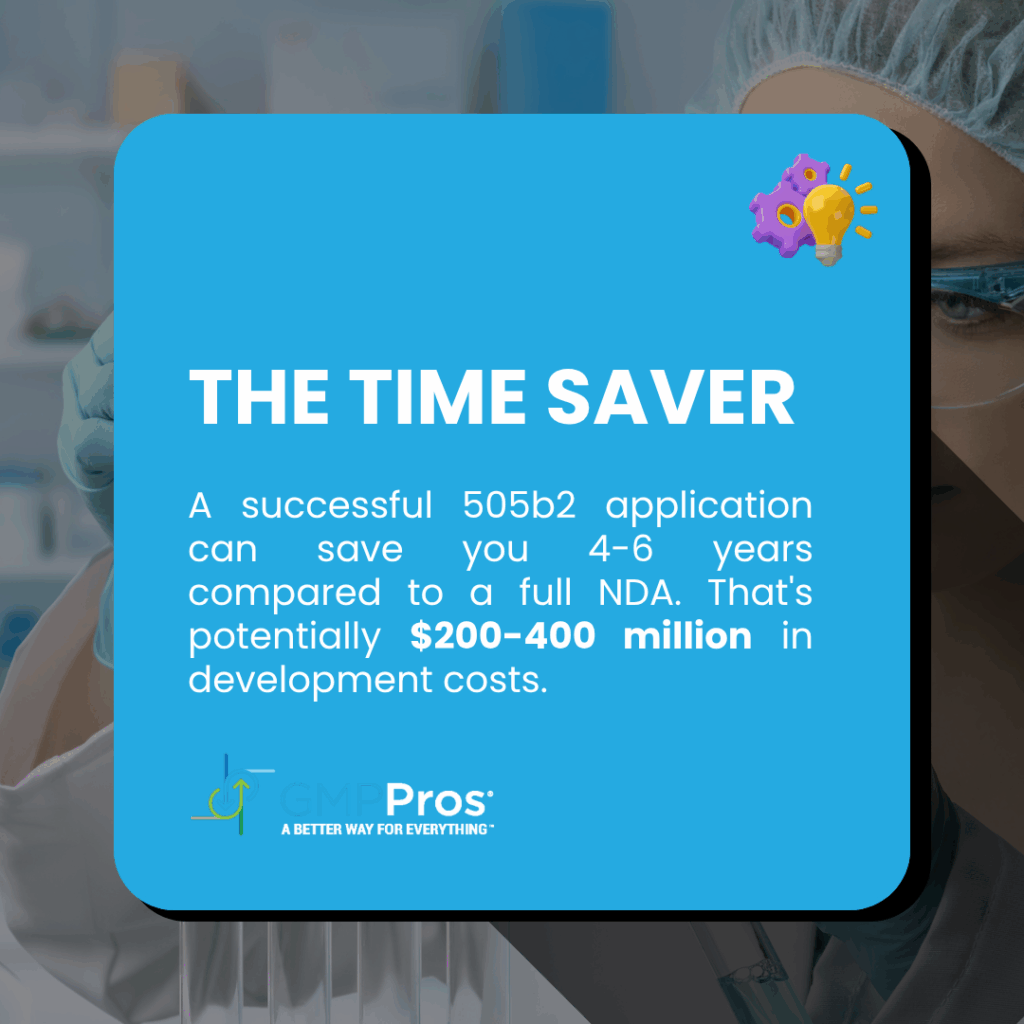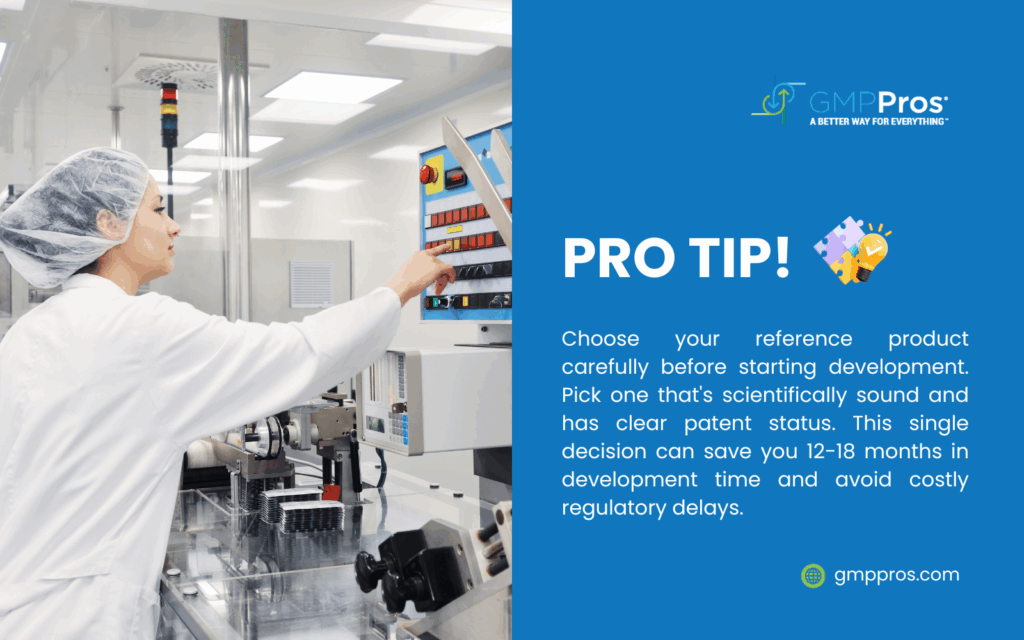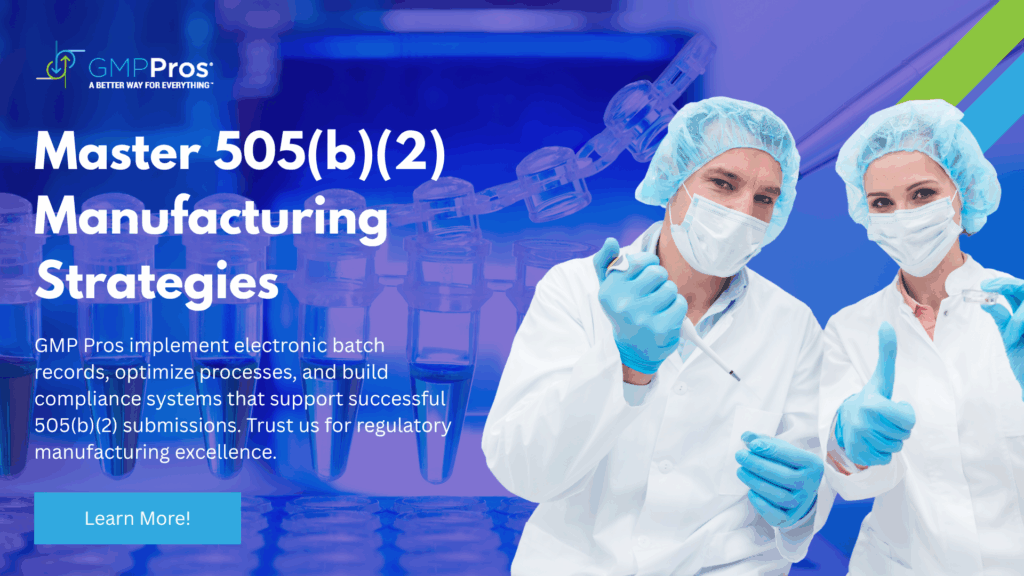The 505b2 application can enable a drug to get approved faster by using data for drugs that have already been marketed. I’ll explain to you exactly how this works and why this is the correct solution for your pharmaceutical company.
Key Takeaways:
- You can cut development time by referencing existing drug data
- This works for modified versions of approved drugs with new formulations or delivery methods
- You need solid manufacturing records and compliance systems
- The process requires good teamwork between the regulatory and manufacturing teams
- Electronic batch records help support your submission
What is a 505b2 Application?
A 505b2 application is a regulatory pathway that allows you to get FDA approval for your drug by referencing safety and efficacy data from drugs that are already approved. You submit your own clinical data for the parts of your drug that are different, but you don’t need to repeat all the safety studies.
This pathway works for modified versions of existing drugs. You can use it when you change the formulation, dosage form, route of administration, or combine existing drugs into one product.
Application Type | Time to Market | Cost | Risk Level |
Full NDA | 8-12 years | Very High | High |
505b2 NDA | 3-6 years | Medium | Medium |
Generic | 1-3 years | Low | Low |
In my experience, companies choose this route when they have a good drug but want to make it better somehow. Maybe they want to change how often patients take it, or they found a better way to deliver it to the body.

Which Drugs Can Use This Pathway?
You can use a 505b2 application for several types of drug changes. The most common ones I see are formulation changes, new ways to take the drug, and combination products.
Let’s say you have a pill that patients need to take three times a day. You develop a new version that only needs to be taken once daily. That’s perfect for a 505b2 application.
Change Type | Example | What You Need to Prove |
New Formula | Extended-release tablet | Same drug gets in the blood properly |
New Route | Pill to skin patch | Drug still works the same way |
New Dose Schedule | Three times daily to once daily | Patients get the right amount |
Combination | Two separate drugs in one pill | Drugs don’t interfere with each other |
I think the key here is that you’re not changing the actual drug. You’re just changing how it’s packaged or delivered. The FDA likes this because the safety profile is already known.
How to Submit Your 505b2 Application
The submission process is straightforward, but you need to be organized. Start by meeting with the FDA early. I always recommend this because it saves time and money later.
Your manufacturing team needs to be involved from day one. The FDA wants to see that you can make your drug consistently and safely. This is where electronic batch record systems become really important.
Here’s what goes into your application:
- Quality information about your drug
- Studies showing how your version compares to the reference drug
- Manufacturing details and facility information
- Clinical data for any new aspects of your drug
The FDA typically takes 10-12 months to review standard applications. If your drug addresses an unmet medical need, you might qualify for priority review, which takes 6-8 months.
Manufacturing Requirements You Need to Know
Your manufacturing setup is crucial for a successful 505b2 application. The FDA will scrutinize every detail of how you make your drug.
I’ve seen companies struggle here because they underestimate what’s required. You need detailed documentation of your entire manufacturing process. This includes your facility design, equipment specifications, and step-by-step procedures.
Manufacturing Area | What FDA Looks For | Common Issues |
Facility Design | Clean, organized, appropriate for drug type | Inadequate environmental controls |
Equipment | Proper maintenance, calibration records | Missing validation documentation |
Processes | Clear, detailed procedures | Inconsistent execution |
Quality Control | Robust testing methods | Inadequate method validation |
Manufacturing efficiency becomes critical when you’re developing modified formulations. You need to show that your process improvements don’t compromise quality.
The FDA inspection team will visit your facility before approval. They want to see that you can consistently make your drug according to your specifications. In my experience, companies that invest in manufacturing process improvement early have much smoother inspections.

Electronic Systems and Data Management
Modern pharmaceutical manufacturing relies heavily on electronic systems. Your 505b2 application will be much stronger if you have robust data management systems in place.
Data quality monitoring is essential. The FDA expects your data to be accurate, complete, and reliable. Electronic systems help you achieve this better than paper-based systems.
I recommend implementing electronic batch manufacturing records if you haven’t already. These systems automatically capture critical manufacturing data and reduce errors. They also make it easier to respond to FDA questions during the review process.
The FDA prefers electronic submissions through their eCTD format. This makes the review process faster and more efficient for everyone involved.
Staying Compliant with FDA Requirements
Pharma compliance for 505b2 applications covers both your product and your facility. You need to follow Good Manufacturing Practices throughout your entire operation.
Your quality assurance program needs to address both the reference product characteristics and your specific modifications. This means identifying potential risks and implementing controls to manage them.
Pharma regulatory compliance doesn’t end with approval. You’ll need ongoing surveillance and reporting systems to monitor your product’s performance in the market.
The FDA will inspect your facility during the review process. They focus on your manufacturing capabilities and quality systems. Make sure you have comprehensive documentation of all your manufacturing activities.
Technology Systems That Support Success
MES implementation pharma projects give you the technology foundation for modern manufacturing operations. These systems connect production planning, execution, and quality management.
Manufacturing execution systems capture real-time production data that supports both your regulatory submission and ongoing compliance. MES historian implementation provides long-term data storage for regulatory reporting.
If you’re implementing new technology, remember that the FDA requires validation of these systems. SAP MES implementation projects need extensive testing and documentation.
Technology | Benefits for 505b2 | Implementation Tips |
MES Systems | Real-time data capture | Start validation early |
Electronic Records | Better data integrity | Follow 21 CFR Part 11 |
Analytics Tools | Trend analysis | Focus on data security |
Integration Systems | Seamless data flow | Test all interfaces |

Common Problems and How to Solve Them
I’ve seen several common issues that can derail 505b2 applications. The biggest one is failing to establish a proper scientific bridge to the reference product.
You need to clearly show how your product relates to the approved drug. This means understanding both the similarities and differences between your version and the reference product.
Manufacturing scale-up causes problems for many companies. You need to prove that your commercial manufacturing process can consistently produce the same quality drug you used in your studies.
Best practices in manufacturing industry help you avoid these pitfalls. The key is early planning and comprehensive risk assessment.
Quality by design principles work well for 505b2 products. Build quality into your product and process from the beginning rather than trying to test it later.
What Makes Applications Successful
Successful 505b2 applications share several characteristics. First, they have a clear regulatory strategy developed early in the process.
Good teamwork between regulatory affairs, manufacturing, and quality assurance teams is essential. How do we measure efficiency in these collaborative efforts often determines whether projects succeed or fail.
Companies are using the 505b2 pathway more often for lifecycle management. It’s a smart way to extend product exclusivity while addressing medical needs.
The FDA continues to update their guidance based on industry experience. Stay current with these changes to optimize your regulatory strategy.

Get Expert Help for Your 505b2 Manufacturing
The complexity of 505b2 applications requires specialized manufacturing expertise. At GMP Pros, we help pharmaceutical companies optimize their operations for regulatory success.
Our engineers work directly in your facilities to implement quality systems and manufacturing execution systems that support regulatory submissions. We know the unique challenges of 505b2 development and provide practical solutions.
Whether you need our services on electronic batch records, capital project engineering, or data analytics, the GMP Pros team delivers measurable improvements in manufacturing efficiency and regulatory compliance. Visit gmppros.com to see how we can support your regulatory and manufacturing goals.
You May Like These:

